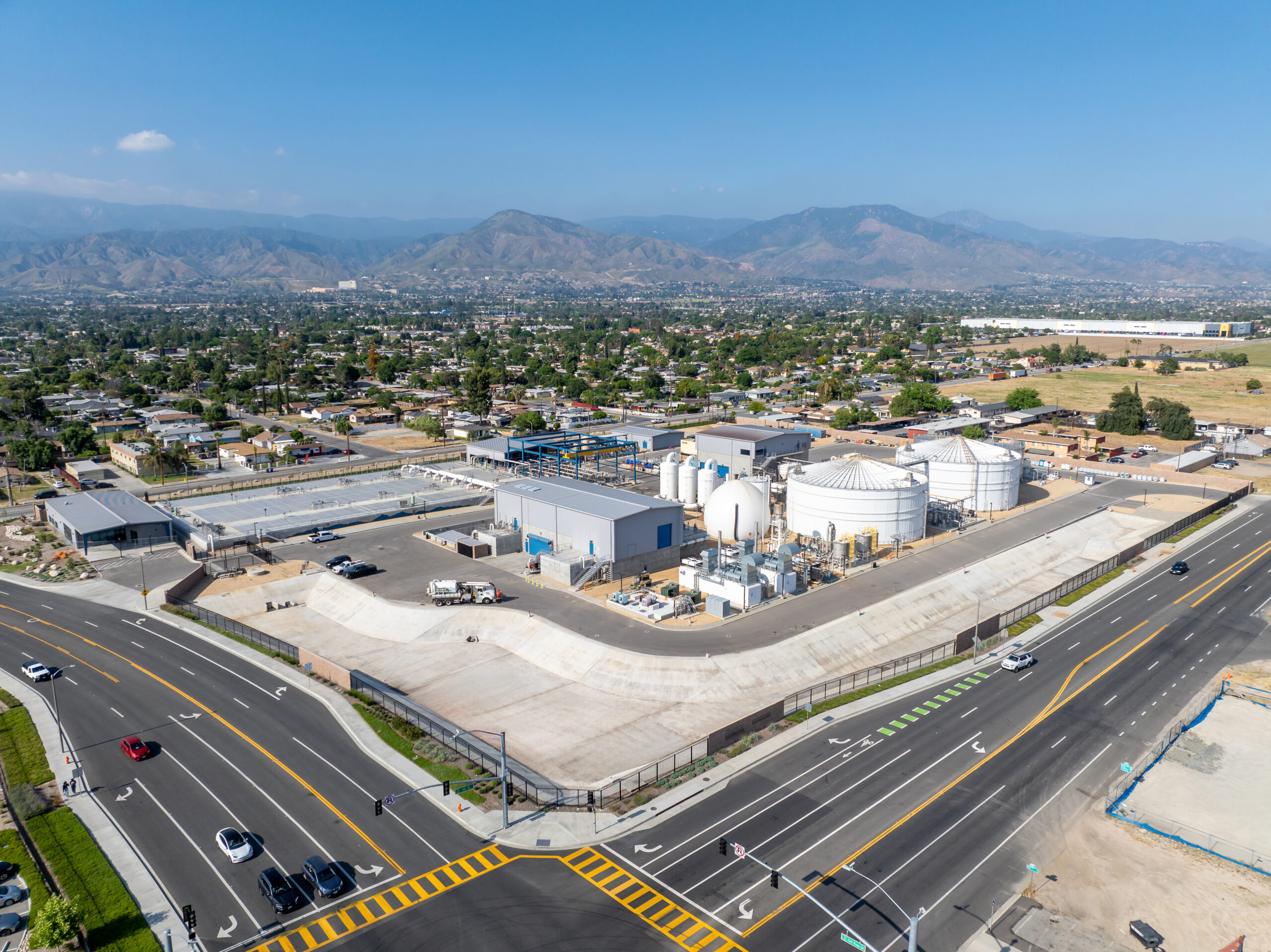The East Valley Water District (EVWD), which serves the cities of Highland, San Bernardino, and portions of San Bernardino County in California, recently underwent a significant transformation with the addition of the Sterling Natural Resource Center (SNRC) in January 2024. This state-of-the-art facility has expanded EVWD’s capabilities to treat its community’s wastewater and sharpened the organization’s focus on community outreach and education, particularly around responsible flushing practices.
RFA spoke with Roxana Morales, EVWD Public Affairs Supervisor, to learn more. The SNRC has been welcomed in the community as a new, sustainable water source and a beacon of responsible water stewardship.
“The SNRC represents a sustainable, drought-proof water source,” Morales said. “The state of California goes through cyclical droughts and if we’re heavily dependent on surface water, not only is our water supply impacted, but also the cost of providing services to our community. The SNRC creates a new source of water that we’re able to use throughout the year and during droughts.”

Before SNRC, EVWD primarily focused on water services and wastewater conveyance, with another agency handling wastewater treatment and much of the associated public education. Now, with the SNRC up and running, EVWD is fully responsible for educating its community on crucial topics like fats, oils, and grease (FOGs) and non-flushable items. This shift has empowered EVWD to take a proactive role in safeguarding its infrastructure and promoting responsible flushing and other important water stewardship information throughout the communities it serves.
Engaging All Ages with RFA Resources
EVWD has found the Responsible Flushing Alliance’s (RFA) educational materials to be invaluable in their outreach efforts. Recognizing the importance of reaching residents of all ages, they’ve effectively utilized RFA resources in various settings:
- For the little ones: Coloring pages and activity sheets from RFA are incorporated into school visits and career days, teaching children about what not to flush in an engaging way. This early education helps build a foundational understanding of wastewater systems and responsible habits.
- For adults and businesses: EVWD leverages RFA’s fact sheets and other educational content to raise awareness about the real costs of flushing non-flushable items.
“We’re maximizing on the resources that RFA provides to help cater those messages for various customers, whether they’re residential or businesses,” Morales said. She also noted that the Do Not Flush symbol and related messaging are becoming increasingly familiar to the public. This means that when EVWD representatives engage with the community, they’re not introducing a completely new concept, but rather reinforcing a message that many have already encountered.
The Power of In-Person Connection: The Community Pop-Up Campaign
EVWD strongly believes in the power of in-person interaction over simply mailing out information. To foster genuine conversations and make education fun, they’ve launched a successful “community pop-up” campaign.
EVWD staff frequents grocery stores, YMCAs, and local events, engaging the public with RFA materials and creative conversation starters. Morales recounted one memorable example involving a “toilet paper over or under” survey, which served as a lighthearted icebreaker before transitioning into discussions about responsible flushing. By making the interactions engaging and conversational, EVWD has found that people are more receptive to learning the ins and outs of responsible flushing.
“We utilize existing material, but we take it a step further to enhance engagement,” Morales said. This direct, interactive approach ensures that the message resonates and sticks, transforming a potentially dry topic into an interesting and memorable learning experience.

Advice for Other Wastewater Organizations: Leverage Existing Data
For other water districts considering integrating responsible flushing education into their outreach programs, EVWD offers clear advice: utilize the wealth of data and resources available on the RFA website.
“There’s a lot of information, material, and activities for people of all ages, which is extremely helpful,” she said. She noted specific data from RFA’s collection study that stood out to her. “The study’s results offered valuable insight into the most common non-flushable items, which we’ve incorporated into our messaging and public outreach.”
By leveraging existing research and material, agencies can avoid “reinventing the wheel,” and instead focus on tailoring the message to their specific customer base. RFA’s commitment to the topic, including partnerships with manufacturers, lends credibility to the Do Not Flush message, making it easier for local agencies to communicate effectively.
EVWD’s experience with SNRC demonstrates how a new facility can be a catalyst for enhanced community engagement. By embracing RFA’s resources and prioritizing creative, in-person outreach, EVWD is not only protecting its infrastructure, but also fostering a more informed and responsible community when it comes to what goes down the drain.
To learn more about RFA’s resources, please visit our website and explore the available materials: https://www.flushsmart.org/enrichment-materials/
